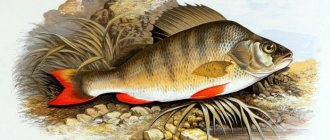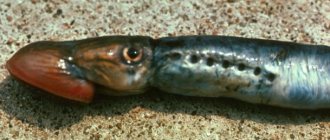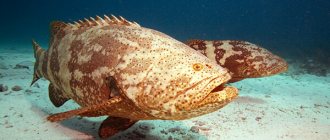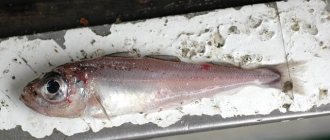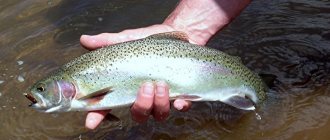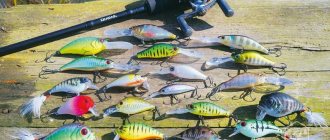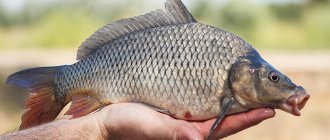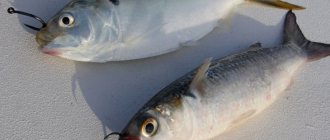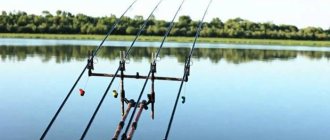Som
Catfish (or Nile Clarius) is an aquarium fish. It must be kept alone because it is an always hungry and large predator. When purchased, the catfish seems elegant and harmless. But this fish grows very quickly and at the same time feeds on other brethren in the aquarium.
Nile catfish can come in several colors. It is also found in water bodies of America and Europe. This fish has received the nickname “walking catfish”. The reason was its peculiarity. When the reservoir dries out, the catfish can calmly crawl to where there is water. Basically, the fish make “transitions” during the rains. The Nile catfish has adapted to breathe atmospheric air thanks to a special epibranchial organ that resembles a sponge.
Features of nutrition and reproduction
The Nile perch is considered the largest predator in fresh water bodies. At an early stage of development, it feeds on plankton, transitioning to larger prey with age. Adult perches feed on insects, crustaceans and small fish. Some sources mention that individuals of this species can eat people who have fallen into the water, but evidence of this fact has not yet been found.
The main feature of the reproduction of this species is that the fry are grown in the mouth of an adult fish. This method of gestation makes it possible to achieve a large population, since a small number of fry die, in contrast to the traditional laying of eggs. Spawning occurs in mid-April.
Nile Perch Dimensions
Nile perch is the largest representative of its species in the world. An individual can reach two meters in length, and the weight of giants ranges from 150 to 200 kilograms. When a fish turns 15 years old, its weight already exceeds 30 kg. Due to its enormous size, the perch is dominant in its habitat. For other fish, the giant is a dangerous predator.
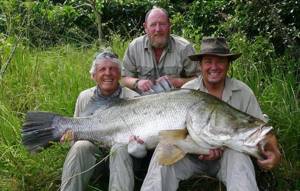
When breeding Nile perch in artificial reservoirs, individuals are somewhat smaller in size than their free-ranging relatives. But such specimens are also in great demand. The meat of the giant perch is very tender and tasty. It is highly valued in industrial production.
The largest perch in the world
If you hear about Nile perch, know that it is considered the largest perch in the world. The weight of the fish often exceeds 150 kilograms, and the length reaches 2 meters! A representative of the perch family, mentioned by the Guinness Book of Records, is found in backwaters in the north and east of the African continent.
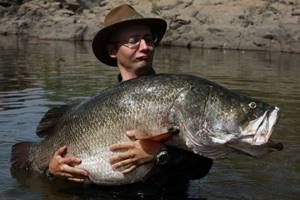
Nile perch
For the first time, giant fish were mentioned in Egyptian manuscripts, when the perch was the main aquatic predator of the Nile, frightening local fishermen. It is not surprising that fishing for the “sea monster” was actively carried out on the Niger and Congo rivers, as well as lakes Victoria and Tanganyika until the 50s. last century.
Interesting fishing
Nile perch is very popular among fishermen who love to catch trophy specimens. The fish attracts hunters with its gigantic size, enormous weight and behavior. According to reviews, one of the best places for fishing for Nile perch is Egypt's Lake Nasser. You can also hunt a giant as part of an African safari. His programs often include perch fishing.
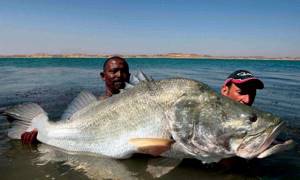
The best time for this is from May to October. Peak bite occurs mainly in July. Winter fishing is rarely successful. From late autumn until the end of March, the perch bites very poorly. In April, it begins to spawn, so you cannot hunt for giants during this month.
Description of the species
The fish has many names, all related to the Nile River (Lates niloticus) - nesihat nilus, Nile perch, water elephant, princess of the Nile. Cave paintings from Ancient Egypt depict people carrying huge fish. They were revered as sacred animals; even the ruins of a necropolis with burials of mummies were preserved.
The weight and dimensions of the Nile perch are much greater than those of other representatives of the perch family. The largest specimen caught in the world weighs 200 kg and reaches a length of 2 m.
For comparison: in Russia, the largest river perch weighing 5.9 kg was caught in the Tyumen region in 1996. And the maximum age of a perch 104 cm long and weighing 17 kg, caught off the coast of Alaska, was estimated by experts to be 200 years.
The appearance of the giant perch can be judged by many photos on the Internet, where happy fishermen can hardly hold their precious catch in their hands.
River monsters living in the territory of fresh and slightly salty lakes and rivers command respect. Beautiful in any plumage - the elongated body is covered with dense scales with a bluish tint, greenish-yellow or lilac, depending on the habitat.
On a flattened, slightly elongated head, dark eyes are set wide with a bright yellow color around the pupil. The lower jaw protrudes slightly forward.
The two dorsal fins - one sharp, the other rounded - have spiny rays, a distinctive feature of the ray-finned class of the Latidae family.
Interesting fact! The largest perch have no bones except dorsal cartilage and sharp teeth.
Fishing tactics
First, several casts are made. If the perch does not react immediately, then you need to move. If the depth of the reservoir begins immediately at the shore, then the wobbler is brought to the slope at an acute angle. On a gently sloping bank you can make a long cast. Since the perch hides in ambushes, you need to look for the giant in such places.
If he went out for a wobbler, but didn’t take the bait, then he makes a second cast and catches it again. In most cases, it is at this time that the fish are caught. And then comes the stage of fishing the perch out of the water. It's quite difficult. The Nile perch, trophy fishing for which attracts many fishermen, is a specimen with enormous weight.
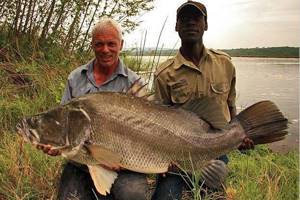
And even with a mass of 10 kilograms, the resistance will be quite fierce. Moreover, as noted by fishermen who have already hunted perch, its twitching is much stronger than that of other fish of the same weight. For hunting, it is better to prepare in advance - stock up on water, don’t forget sunglasses, etc. Before you catch a perch, you need to find it, and this sometimes takes a lot of time.
Characteristics of the "beast"
Height, and here we can talk about height, because not every man achieves this, is 2 meters! The weight is as much as 150 kg, and with this weight you can compete in sumo wrestling!
Naturally, it is not recommended for children to catch such fish; at the very least, it is dangerous to health. But it is an obvious fact that any fisherman, when going fishing, dreams of catching something similar! Hence the conclusion that children do not need to go to Africa, but fishermen need to go to the dark continent.
READ Match rod - what is it, types: shimano, mantary and fishing technique
However, not everyone has the time or finances to go fishing in distant and hot countries. Moreover, who knows their foreigners? Perhaps they are lying a little according to the old fishing tradition, although they also attach video and photos with their trophy, but what can’t lame key and Photoshop do now?
Read: Fishing from a boat: dangers lurking
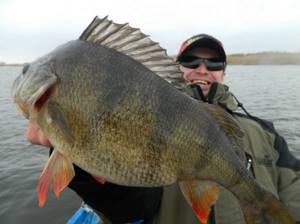
Features of behavior
Each type of fish has its own behavioral characteristics. This also applies to Nile perch. It is a predator, so it treats other inhabitants of water bodies very aggressively, even to the point of destroying some species of fish.
Nile perch prefers artificial bait, so experienced fishermen use trolling to hunt for the giant. But catching a perch is half the battle. You still need to be able to pull the fish out of the water. This is quite difficult, since Nile perches begin to resist fiercely, and thanks to the enormous weight, the struggle between man and fish becomes serious. To do this, fishermen need to have such qualities as dexterity, good coordination of movements, dexterity and utmost attention. Of course, even greater strength is important. But even with all these qualities and great experience, perches often break out and go to the depths unharmed.

If the Nile perch intends to react to the bait, it does so immediately, on the first or second cast, and much less often on subsequent attempts. These giants follow an ambush line of behavior, and the predator’s attack occurs quickly.
Fishing Safari
In addition to local African amateurs and fishermen, fishermen from other continents also dream of catching a gorgeous Nile trophy in their track record. Fishing tourism services are provided by Egypt and Cameroon.
Trips to low-flow reservoirs and reservoirs are organized for tourists. For example, in Egypt, fishing safaris are held at the Nasser Reservoir. Fishing is done using a spinning rod.
Fishing begins from the bottom upstream. Make no more than five casts in one place, then move on. The range of reaction to a wobbler in the Nile perch is 4 m. Even a slight miscast, within 0.5 m, affects the bite.
If there are ledges of stones or snags on the water surface, then you need to cast the spinning rod as close to them as possible.
The trophy will almost certainly be in the following places:
- bamboo thickets,
- near islands of grass and snags,
- at the beginning of the pool,
- immediately after the waterfall drains.
The fact is that such places attract small fish, which are food for the largest river perch.
When casting, you must remember your safety and take a stable body position in advance, since a caught predator can easily plunge an unlucky fisherman into the water. It is difficult to keep such prey.
Fishing time
The bite of the Princess of the Nile directly depends on the ambient temperature. The most active bite will be from 11 to 12 o'clock and the air temperature is 30 degrees and above. Further, as the heat of the day subsides, the bite decreases. In the morning coolness, which fishermen like so much, it doesn’t bite at all.
The optimal months for catching Nile perch are March and April. This is the time when the water temperature in African waters becomes most comfortable for fish. The bite stops completely with the beginning of the rainy season , as the water becomes cloudy and cold.
Lures and tackle
The ideal bait is wobblers, of any color and without sound elements. Other baits made of plastic, wood, spinners, etc. work in about five cases out of a hundred. As soon as the perch bites, the wobbler becomes unusable; it is deformed by the powerful mouth of the fish. Therefore, it is advisable to have a supply of bait.
On wobblers, it is recommended to replace the factory connecting rings with ones capable of withstanding a tensile load of 40-50 kg. Hooks should have long stings made of thick wire. A leash is required, as the cord will constantly rub against stones and snags. It is better to use soft cables as a leash; they are better resistant to lint.
The rod must be at least 220 cm and have a weight of 100 g. For catching large fish, a handle made of chloroprene rubber is most suitable.
Tips from fishermen
Experienced fishermen recommend having Kevlar gloves with you to hold your catch when handling it. It is recommended to replace universal fishing pliers with pliers, since a construction tool has a stronger and more rigid grip.
Before removing hooks from Nile perch, it is recommended to stun it. The perch resists so desperately that it can easily injure the fisherman with its fins or hooks .
It is better to catch the Princess of the Nile with a partner. It is very difficult to pull out a fish weighing over 30 kg alone.
